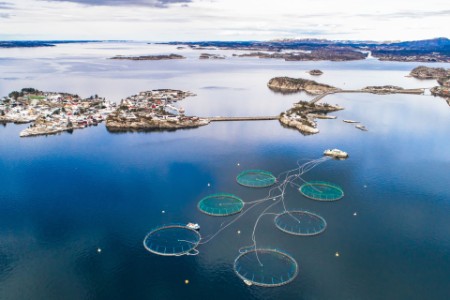On Wednesday 28th of September 2022, the Ministry submitted for consultation a proposal for the introduction of resource rent tax on aquaculture. The aquaculture industry utilizes fjords and sea areas that belong to the public, and as such the background for the proposal is that the Government wishes, through a resource rent tax, that the public retains more of the value generated through the exploitation of these resources. According to the Ministry, the production of natural resources often generates a return in excess of what is normal through utilization of public area, often referred to as resource rent. By introducing a resource rent tax, the Government wants some of this economic rent to be returned to public. The proposal includes the production of salmon, trout and rainbow trout and the Ministry proposes an effective tax rate of 40 percent. Furthermore, it is proposed that the resource rent tax should be distributed equally between the state and the local municipalities.
What is the content of the proposal?
The Ministry proposes to design the resource rent tax as a cash flow tax. If introduced, income and investments will be taxed on an ongoing basis in the year in which they are earned/incurred. When determining income, one model is proposed for salmon and another for trout and rainbow trout. It is proposed that revenues from salmon shall be determined on the basis of a norm price to counteract tax motivated pricing. The norm price will be set on the basis of prices for salmon on a public exchange. For rainbow trout and trout, there are no listed commodity prices, and therefore the income will be based on actual sale prices.
Who is affected?
The resource rent tax will apply to income from commercial licenses for production of salmon, trout and rainbow trout in the sea for consumption, regardless of how the holder of the license is organized. The resource rent tax will not affect production at land-based facilities or development licenses unless such a permit is converted to an ordinary license for fish consumption. The proposal is designed not to apply to the smallest companies. These are excluded by the introduction of a tax-free allowance of between 4,000 and 5,000 tons of biomass. According to the proposal, the consequence is that approximately 65-70 percent of aquaculture companies are not affected by the new rules. This group represents a significant number of the companies operating in the aquaculture industry, but the companies do not account for more than 15 and 17 percent of the total biomass. Thus, the main part of the Norwegian aquaculture industry will be affected by the new proposal. Both the largest companies, but also companies that are relatively small compared to the large players on the market will be affected.
The tax-free allowance
The Government proposes a tax-free allowance based on an estimated average profit per ton of biomass which can be deducted from positive resource rent income. The tax-free allowance amount means that the smallest players may be exempted from resource rent tax and can also be seen as a standard deduction for historical purchases of permits. The Government proposes that the tax-free allowance should be set at 4 000 tons biomass or 5 000 tons biomass in 2023. According to the proposal, the tax-free allowance is granted at group level in order to counteract adjustments through splitting into several companies. It is also proposed to establish rules at the ownership level, so that companies owned by the same person and their close associates only receive the tax-free allowance once. Related parties will be defined in section 19-3 (3) of the Norwegian Tax Act.


